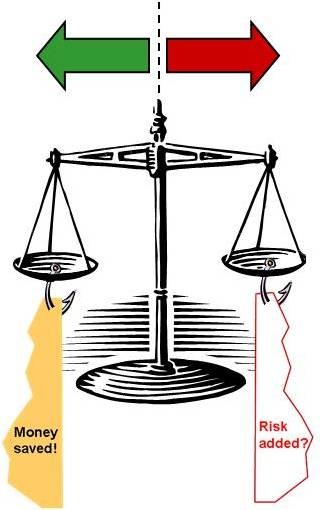Benefits and risks
Post on: 24 Июль, 2015 No Comment

Benefits
- Buy/sell flexibility. ETPs are traded on the ASX and this means that you can buy and sell during ASX’s trading hours. This means you can enter and exit an investment in an ETP as you would a share with a corresponding three day settlement period.
- Diversification. ETPs can help you diversify your portfolio across markets or asset classes that otherwise could be difficult for investors to access. For example, there are ETPs that cover emerging markets, specific market sectors, government and semi-government bonds, commodities and currencies.
- Lower cost. ETPs are typically able to achieve lower operating costs and the management fees (commonly referred to as MERs or Management Expense Ratios) can be significantly lower than other forms of professionally managed investments.
- Returns from capital appreciation and income. ETPs will change in value as the underlying asset or assets change in value. Depending on the type of product and the benchmark being tracked, investors can earn returns through capital appreciation and/or distributions. Investors may also enhance after tax returns from franking credits.
- Fair value. ETPs are designed to ensure that they trade close to their underlying value. This means that the on-market price should closely reflect the value of the underlying assets held in the ETP. This is commonly referred to as trading at net asset value (NAV).
- Taxation advantages. The turnover of the underlying portfolio tends to be low with the constituents of equity ETPs changing only when there is a rebalance of the index. This means that the level of capital gains tax that needs to be paid by the fund and its investors can be greatly reduced.
Risks
- Market risk — market conditions (for example, lack of liquidity) may make it difficult to buy or sell ETP in certain circumstances.
- Tracking error — the return on the portfolio may deviate from the return on the index or benchmark tracked.
- Exchange rate fluctuations — ETPs which seek to achieve the same return as a particular overseas market index or benchmark, and are traded and settled on ASX in Australian dollars, may be exposed to additional risks. If the ETP is not hedged against currency risk, fluctuations in the exchange rate can affect the value of the portfolio. Additionally, there may be political risks in the home country of the overseas market or benchmark which may also affect the value of the portfolio.
- Taxation outcomes — there may be different taxation outcomes for investors in synthetic ETPs when compared with direct replication ETPs, depending on whether any gains or losses in the ETP are achieved through holding the assets that make up the index or benchmark or are achieved through the derivative exposure. Any different taxation outcomes may significantly impact the effective return for investors.
- Use of derivatives and counterparty risk — ETPs that use derivatives could cause the ETPs to incur losses. Some ETPs for example may use over the counter (OTC) derivatives, which are not subject to central counterparty clearing arrangements. Central counterparty clearing arrangements, where available, help to mitigate counterparty risk.

Specific Fixed Income ETP risks
There are a number of specific risks associated with investment in fixed income ETPs. These risks may result in different investment returns and a loss of income or capital value. Some of the risks include;
- Interest rate movements — affect the income earned by the underlying bonds of the ETP. Falling interest rates can lead to a decline in income for the fund while an environment of rising interest rates can lead to the price of the bond falling.
- Credit risk – refers to the risk that the issuer of the bonds may fail to pay interest and principal. Typically those bonds issued by the Commonwealth and State Governments carry lower credit risk than other fixed income securities.
- Distributions risk — there is no assurance that an ETP will pay a distribution. Each ETP is reliant on the receipt of coupons and income from its underlying holdings.
- Taxation risk — the taxation treatment/outcomes may be different to other asset classes such as shares.
Specific risks for Inverse ETPs
Inverse ETPs will generally seek to provide returns which are negatively correlated to an asset. An increase in the value of the asset will generally result in a decrease in the value of the product. A decrease in the value of the asset will generally result in an increase in the value of the product. This result is the opposite of most other ETPs.
These types of ETPs may use short selling or be constructed in a synthetic manner in order to obtain a short exposure. Short selling may involve the risk of incurring substantial losses in excess of the initial amount invested.
Specific risks for Leveraged ETPs
Leveraged ETPs generally involve the fund borrowing to gear its investment exposure. This gearing magnifies and increase the volatility of, both gains and losses from the fund’s investments. The product is therefore riskier than an equivalent product that does not provide a leveraged exposure.
An increase in the cost of borrowing, which may result from an increase in interest rates or an increase in the borrowing rate charged by the lender, will likely reduce the product returns.
Specific risks for single asset ETPs
There are a number of additional specific risks associated with investments in single asset ETPs. These include:
- Diversification — Holders of a single asset product are not provided the benefits of diversification that normally apply to an ETP which has exposure to a number of different assets
- Liquidity — Single asset products may be more susceptible to liquidity risk. It is likely that the liquidity may correlate to the liquidity in the market for that underlying — meaning that where the market for the underlying becomes illiquid, it is likely that the corresponding product may become illiquid
Specific risks for Synthetic ETPs and Structured Products
Synthetic ETPs and Structured Products have different risks to other ETPs that investors should be aware of. You should always read the associated product disclosure statement carefully to ensure you understand how the relevant synthetic ETP and Structured Product operate.
Synthetic ETPs and Structured Products use derivatives to achieve their investment objective. If you invest in these you are subject to the risk that the counterparty to the derivative may fail to meet some or all of their obligations.
This risk applies to the portion of the synthetic ETP or Structured Product’s assets that represents money owing under the derivatives. This risk is greater when the issuer uses over the counter (OTC) derivatives which are not subject to central counterparty clearing arrangements. Typically most synthetic ETP issuers use OTC swap contracts that are not subject to central counterparty clearing.
In specific reference to synthetic ETFs, to assist in mitigating this counterparty risk, ASX requires that each synthetic ETF be operated to keep the amount of assets reflecting money owing by OTC derivative counterparties to a limit of up to 10% of the net asset value (NAV) of the ETF. If for some reason the counterparty fails to meet its obligations to the ETF, the fund may not be able to deliver its return objective and investors could lose up to 10% or more of the value of their investment in the ETF.
Additionally, ASX has mandated that all derivative counterparties for synthetic ETFs on ASX must meet certain eligibility requirements to minimise the risk of the counterparty failing to perform. Specifically, permissible counterparties are limited to: Bank ADIs (i.e. institutions that are granted an authority to carry on a banking business in Australia under the Banking Act 1959); Foreign Banks authorised under the Banking Act 1959 or a foreign entity subject to an equivalent form of prudential regulation to the Banking Act 1959; or an entity unconditionally guaranteed by any of the preceding institutions. Investors are advised to read the product disclosure statement for each synthetic ETP to ensure they fully understand the risks involved.














